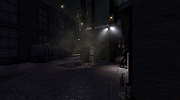 |
Snap2HTML v2.12
Snap2HTML v2.12
Snap2HTML takes a "snapshot" of folder structures on your harddrive and saves as HTML files. What's unique about Snap2HTML is that the HTML file uses modern techniques to make it feel more like a "real" application, similar to Windows Explorer, displaying a treeview with folders that you can click to view the files contained within (see example output). There is also a built in file search. Still, everything is contained in a single HTML file that you can easily store or distribute.
Features:
Create folder listings and save as HTML
One HTML file contains everything
Listings with file explorer "look and feel"
Built in search functionality
Export file listings as plain text, JSON or CSV
Link listings to the real files
Sortable columns with filename, date and size
Unicode support
Automation via command line
Portable
Free Open Source Software
Example Output
(Click here for live demo)
Exported file listings can be used in many ways. Here are some examples that I have found useful, but you can probably come up with your own ideas!
Keep file listings as a complement to your backups (note however that this program does not backup your files! It only creates a list of the files and directories).
Keep a list of the files on external HDDs and other computers in case you need to look something up and don't have access to right now.
Save file listing for historic or nostalgic reasons, or for documentation.
When helping your friends with their computer problems you can ask them to send ... |
 |
4,844 |
Jan 12, 2022
RL Vision  |
 |
The Dark Mod v2.12
The Dark Mod v2.12
A free stealth game that resembles the original Thief series games (1 and 2) by Looking Glass Studios.
It was originally a "Total Conversion Mod" of the game Doom 3 but it was converted to a Standalone Game in 2013
after id Software released the Doom 3 source code in 2011.
It came from members of the TTLG community who enjoyed playing and creating Fan Missions for Thief 1 and 2
When Thief: Deadly Shadows (TDS) was released in 2004, there was no way to create Fan Missions for it and the publisher was indicating
that no Mission Editor would be forthcoming.
The Dark Mod was proposed as a solution to allow Thief fans to make new Fan Missions in a similar style to Thief: Deadly Shadows
As a "Fan Mission Platform", The Dark Mod can be considered a wild success!
There are currently have over 170 missions available!
Minimum Specifications
CPU: 1.5Ghz with x64 instructions (64-bit) and SSE2 SIMD support
GPU: OpenGL 3.2 compatible with at least 512MB of VRAM ( roughly the performance of a Geforce GT 8800 )
RAM: 2GB
Storage: 30GB free space ( depending amount of missions you download )
Display: We recommend a display that can render at least 640x480 for legible menus and hud.
(Some analog NTSC televisions with 480i have high quality sub-pixels that can render an image that looks approximately like 1024x480 or 800x480.
If you PC has analog TV out, try configuring 800x600 or 1024x768 resolutions for improved fidelity.)
Visit The Dark Mod Wiki for all you need to know about the game.
This download is for the Windows version (very bottom of page).
Windows Instructions:
1) Download tdm_installer.exe.zip by clicking the ... |
 |
107 |
Sep 26, 2024
The Dark Mod Team  |














